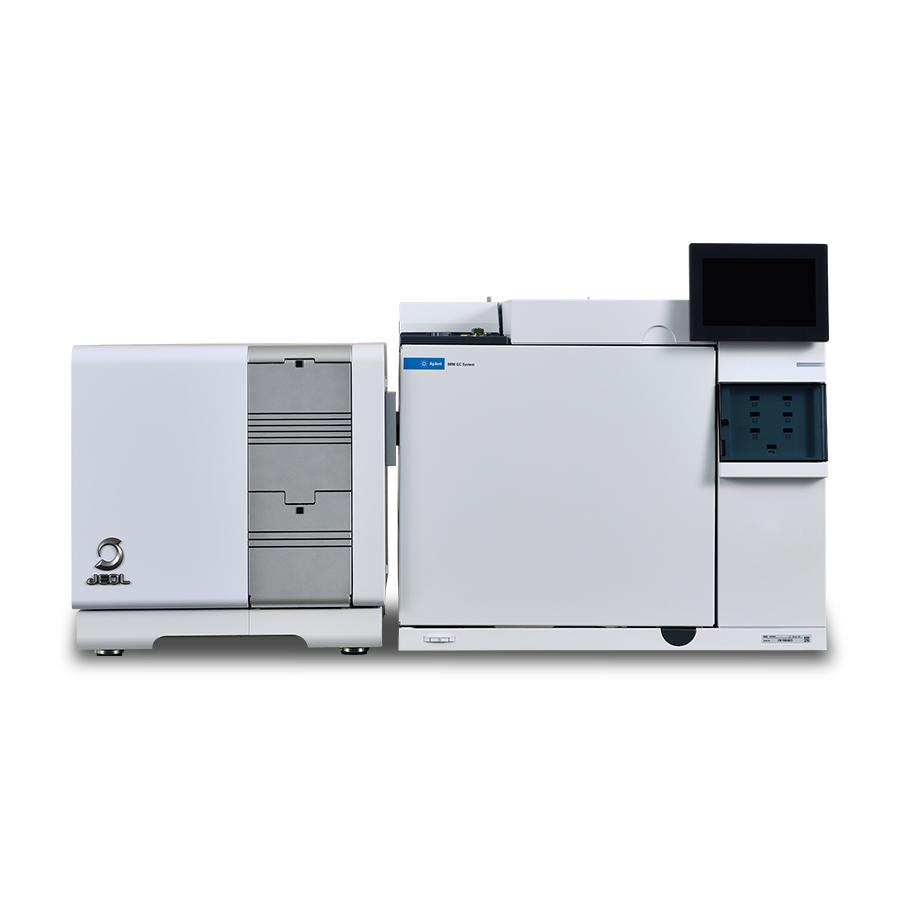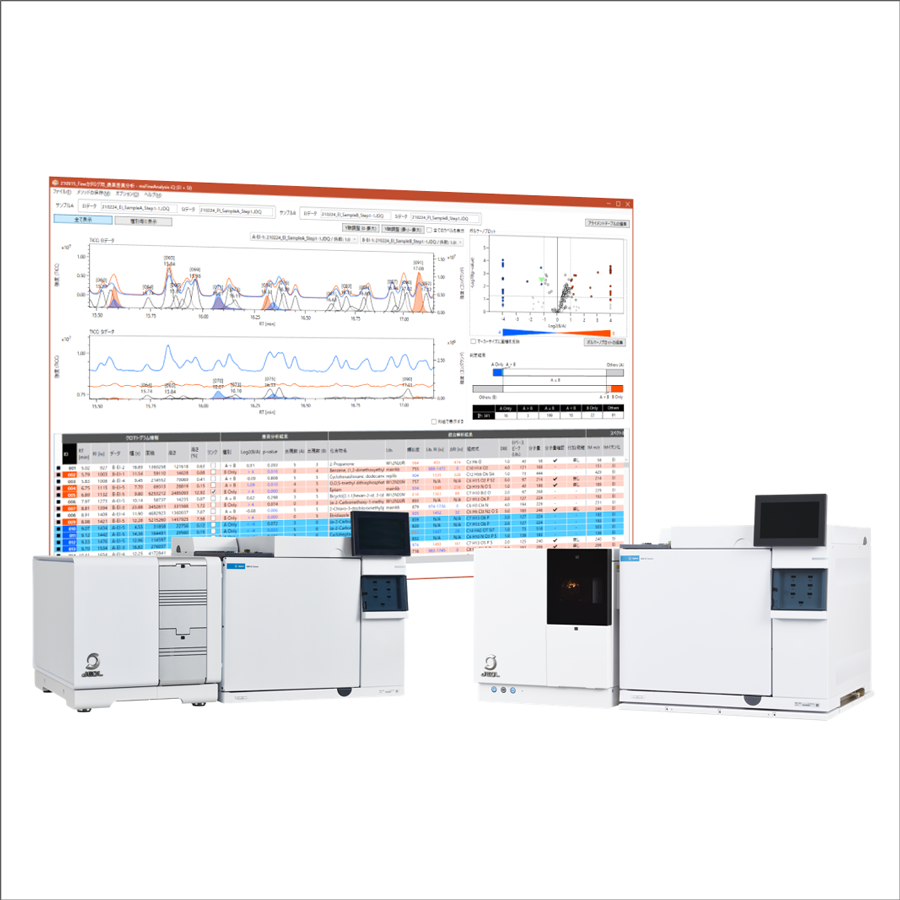Analysis of additives in polypropylene products using thermal desorption-GC-MS
MSTips No. 436
Introduction
Thermal desorption (TD) is a GC pretreatment device for introducing gas samples such as atmospheric air and indoor air. It can also be used for gases generated from solid or liquid samples. In this MSTips, we introduce the analysis of additives in polypropylene products as the application of TD-GC-MS to material analysis. Figure 1 shows an overview of TD operation for measuring generated gas from a solid sample. ① Sampling: Seal the sample into an empty sample tube. If necessary, add the glass wool to fix the sample. ②Tube desorption: The sample tube is heated in the TD device, and the desorbed gas is collected in a cooled focusing trap. ③ Trap desorption: The focusing trap is heated at high speed and the desorbed gas is introduced into the GC in a narrow band width.
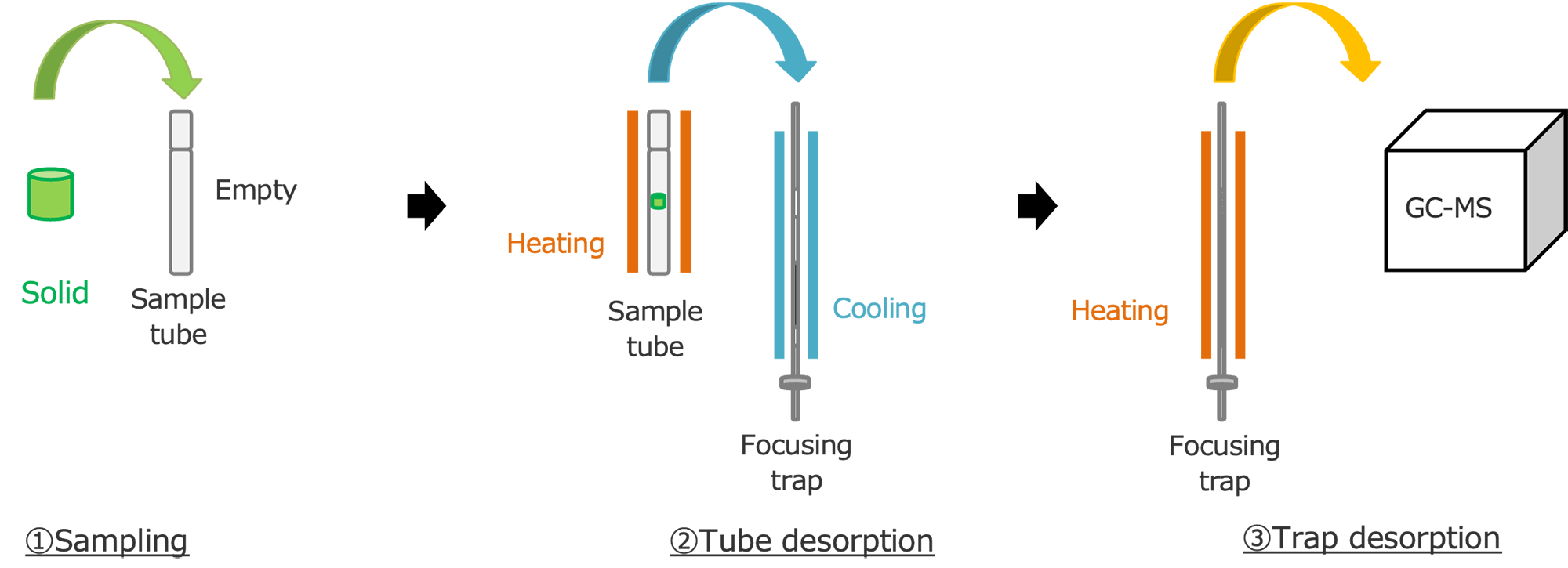
Figure 1 Overview of TD operation
Experiment
Two types of commercially available polypropylene films (Samples A and B), 30 mg each, were used as samples. Since the analysis target was additives, the tube desorption was set at a relatively low 90 °C for 30 minutes. msFineAnalysis iQ (JEOL) was used for analysis, and its differential analysis function extracted characteristic additives from each sample. Table 1 shows the measurement conditions of TD-GC-MS.
Table 1 Measurement conditions
| TD conditions | |
|---|---|
| Thermal Desorption | TD-100xr (Markes International Ltd) |
| Sample tube type | Empty |
| Tube desorption | 90°C (30 min), 84 mL/min, Splitless |
| Focusing trap type | General purpose Graphitized carbon (T11) |
| Trap cooling | -30°C |
| Trap desorption | 280°C (3 min), 46 mL/min, Split 22:1 |
| Flow path temperature | 240°C |
| GC conditions | |
|---|---|
| Gas Chromatograph | 8890A GC (Agilent Technologies) |
| Column | HP-5MS (Agilent Technologies) 30 m x 0.25 mm, 0.25 μm |
| Oven Temperature | 40°C (3 min)-10°C/min -320°C (6 min) |
| Carrier flow | He, 2.0 mL/min |
| MS conditions | |
|---|---|
| Spectrometer | JMS-Q1600GC (JEOL Ltd.) |
| Ionization | EI+:70 eV, 50 μA |
| Ion source temperature | 250°C |
| Mass range | Scan, m/z 35-600 |
Results
Figure 2 shows the TIC chromatogram. Samples A and B were made of the same polypropylene, but there were significant differences in the detected peaks.
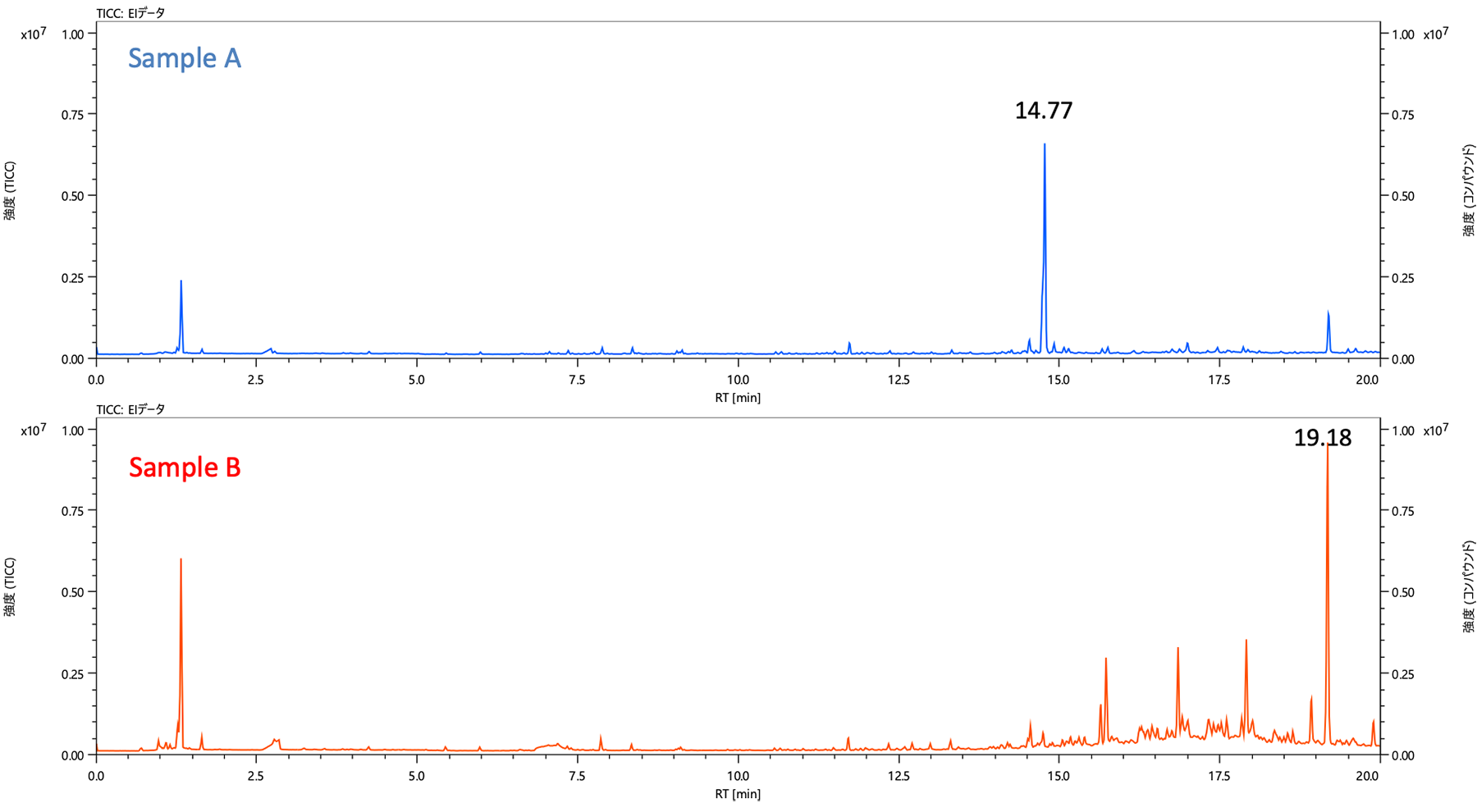
Figure 2 TIC chromatograms
Figure 3 shows the difference analysis results of msFineAnalysis iQ. From the 11 peaks with an intensity ratio of 5% or more to the maximum peak, 2 peaks that were strong in sample A and 8 peaks that were strong in sample B were extracted.
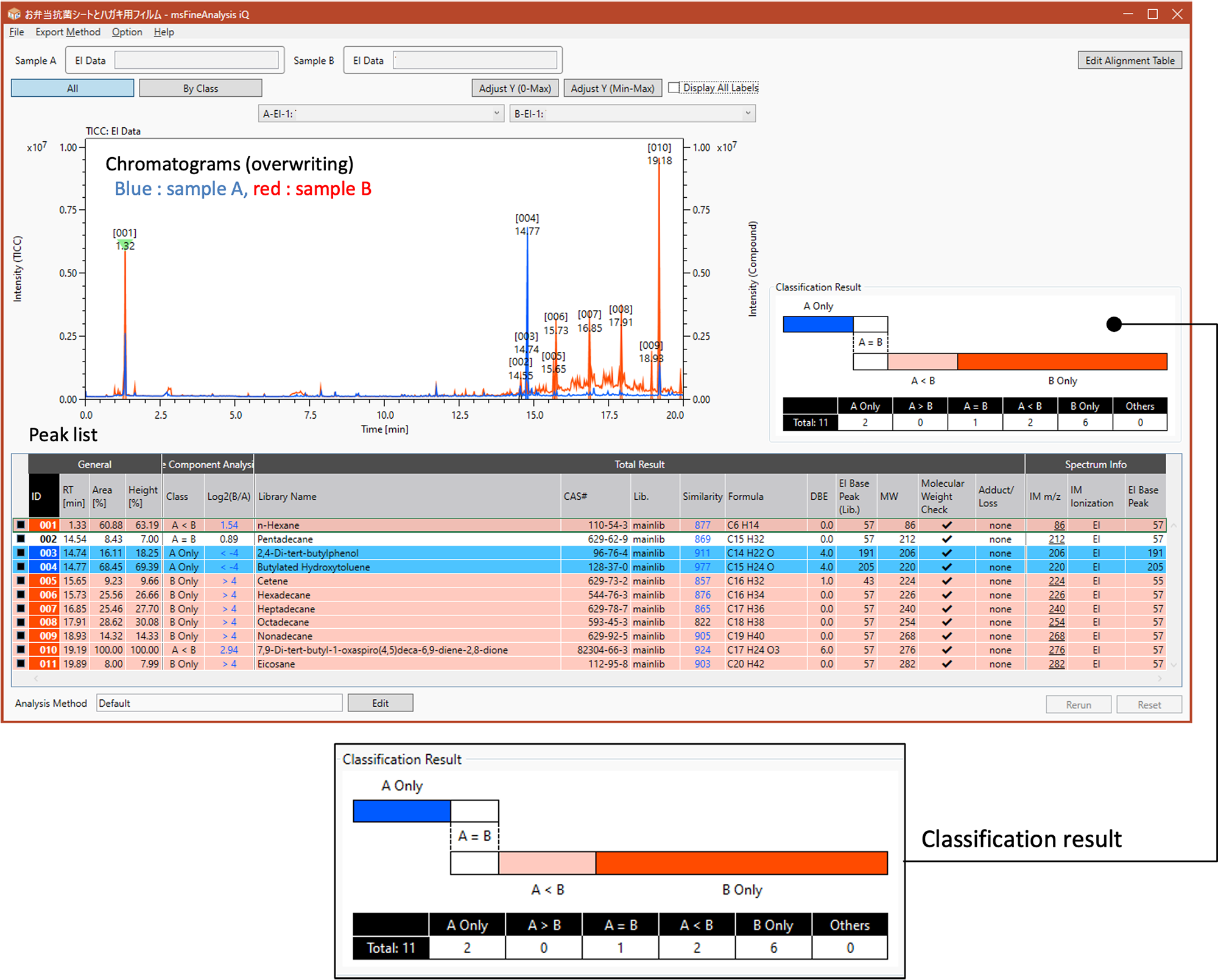
Figure 3 Difference analysis result of msFineAnalysis iQ
Table 2 shows the peak list of the qualitative analysis results. The background color indicates the intensity difference between samples. Blue is strong in sample A, red is strong in sample B, and white is not different between samples. In Addition, to improve the accuracy of qualitative analysis, msFineAnalysis iQ searches for molecular ions from measured mass spectra. In this result, it was possible to confirm molecular ions in all 11 peaks.
Table 2 Peak list of qualitative analysis result

Figure 4 shows the mass spectra of ID004 (detected at 14.77 min in sample A) and ID010 (detected at 19.19 min in sample B). As a result of qualitative analysis, the former was a phenolic antioxidant Butylated hydroxytoluene (BHT). The latter was [7,9-Di-tert-butyl- 1-oxaspiro(4,5)deca-6,9-diene-2,8-dione], which is a decomposition product of a hindered phenolic antioxidant Pentaerythritol tetrakis[3-(3',5'-di-tert-butyl-4'-hydroxyphenyl)propionate].
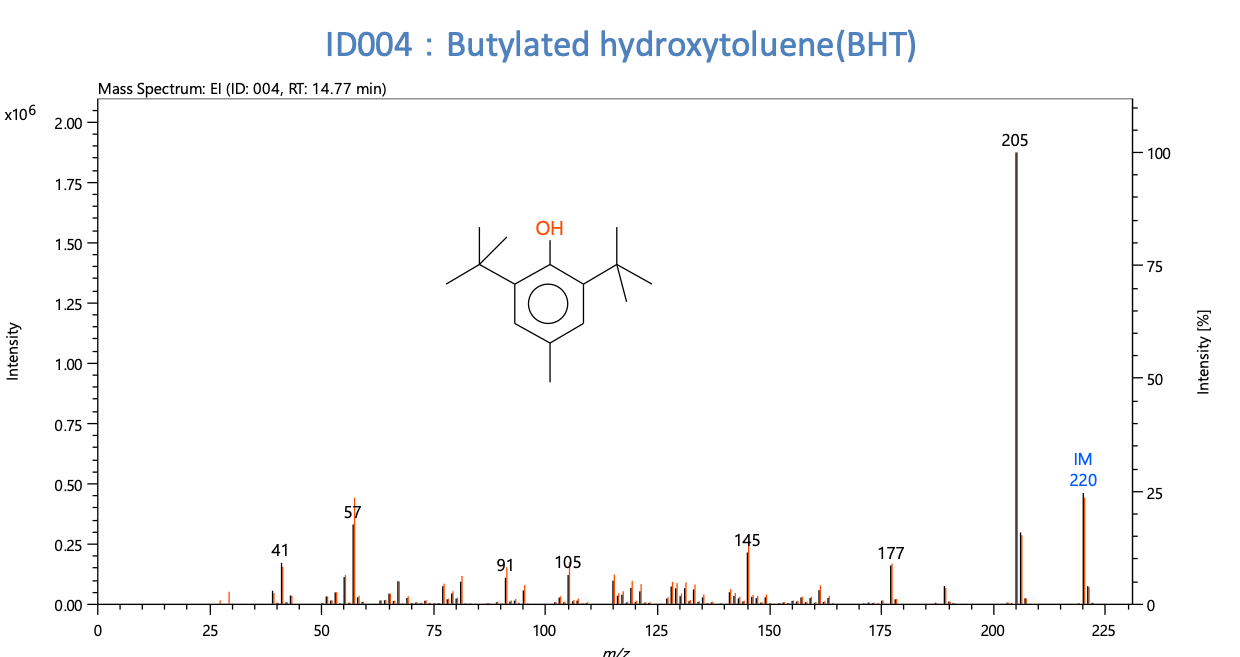
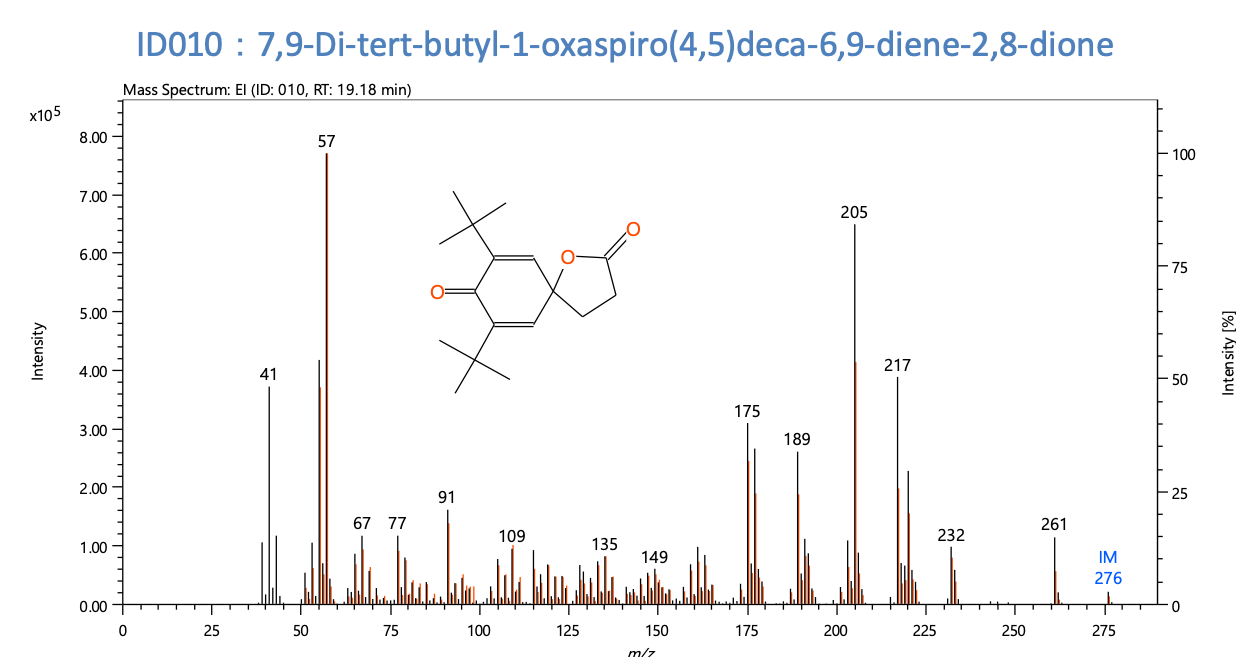
Figure 4 Mass spectra of ID004 and ID010
Conclusion
Using TD-100xr and JMS-Q1600GC, it is possible to analyze additives in propylene products with high sensitivity. In addition, msFineAnalysis iQ can easily extract characteristic components from complex chromatograms and perform qualitative analysis with high accuracy. These devices and software are also expected to be useful in materials analysis.
Solutions by field
Related products
Are you a medical professional or personnel engaged in medical care?
No
Please be reminded that these pages are not intended to provide the general public with information about the products.

